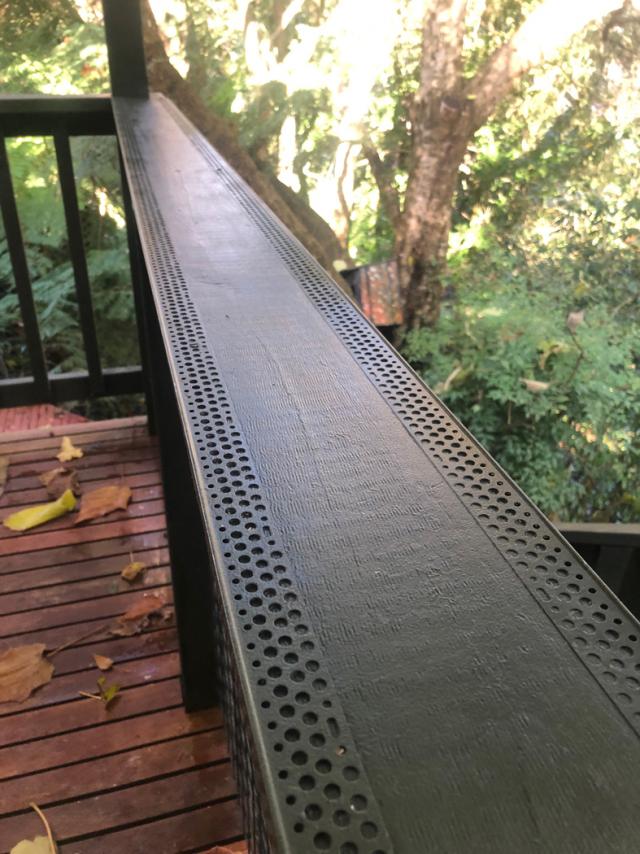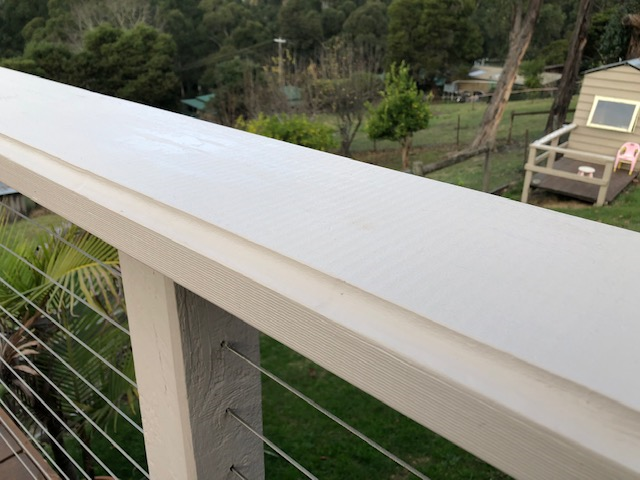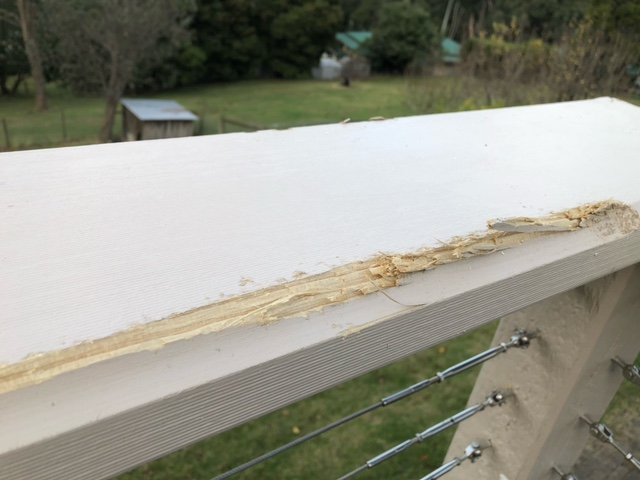
By Tyler Wright
When Cindy DeLuca had new decking built on her Healesville property, she did not know several years – and $15,000 – later, she would still be trying to keep cockatoos from damaging timber and chipping away at her railing.
“We’ve just repaired the railings from the last lot of damage…instead of taking the railings and replacing all the corners, we just routed them off so they’re on an angle,” Cindy said.
“We had the painter come…three coats of paint he gave the railings, and then a week later [the cockatoos] are back and they’ve just destroyed it.”
The problem comes when no-one is at home to monitor the birds; with the most recent damage occurring after Cindy left her house for one night.
Ms DeLuca has tried the fake animals such as owls and toy snakes but the birds just “threw them over the edge.”
“We’ve got eight acres and lots of dead trees around our property and [the cockatoos] like to sit in the dead trees – I know they’re just sharpening their beaks…but they’re so destructive, and it’s the cost of it, [too]…
DELWP told the Star Mail cockatoos’ constantly chew to maintain beak size and condition as their beaks beaks grow throughout their lifetime.
“Cockatoos flock together to favourable food sources and are known to use regular flight paths and return to good feedings areas. This can result in them returning to the same area each year and causing repeat damages to properties.” Port Phillip Regional Manager, Natural Environment Programs Merryn Kelly said.
One Mount Evelyn resident, Susanne Richards, came up with a solution almost 33 years after first encountering her local cockatoos – screwing plasterer’s metal corner strips into her railings.
“It’s a metal that plasterers use when they have corners in rooms and they plaster over that – it’s very supportive and very strong…I’ve got my regular Cockies and I think they’ve all learned it’s a waste of time [now],” Susanne said.
After posting her innovative answer to what appears to be a common problem in the Yarra Valley, Susanne received almost 900 likes on one Facebook post.
“I painted a mixture of olive oil and cayenne pepper on our heritage balcony and they left that alone quick smart let me tell you,” one commenter wrote.
“We have also put metal over ours as well, it seems to work,” another penned.
Recent Arthur Rylah Institute for Environmental Science (ARI) modelling conducted earlier this year estimated the statewide population of Sulphur-crested cockatoos is 7.7 million, with a slight recent decline in number of Sulphur-crested cockatoos at a state-wide level.
Susanne said the issue has “always been the same” in the hills
They’ve got magnificent communication between them – they know exactly what they’re doing – so if one finds a good spot, he tells all his mates,” she said.
“You can go to the several plastering depots around…you’ll be able to get the [metal] there.”
It is illegal to harass or harm native birds and other wildlife without authorisation and All Victorian native wildlife is protected under the Wildlife Act 1975, with all practical non-lethal control methods needing to be considered before applying for an Authority To Control Wildlife (ATCW) for lethal control.
“If you’re being faced with damage to your property, the aim is to break the habit of cockies roosting in the area they’re causing damage,” Port Phillip Regional Manager, Natural Environment Programs Merryn Kelly said.
Other deterrent methods include using chicken wire to protect furniture, wooden window frames, install rolling perches, spike clusters, electric shock perches or wiring to prevent birds perching on fixtures and using retractable shade-cloth to protect wooden surfaces or windows during absence.








